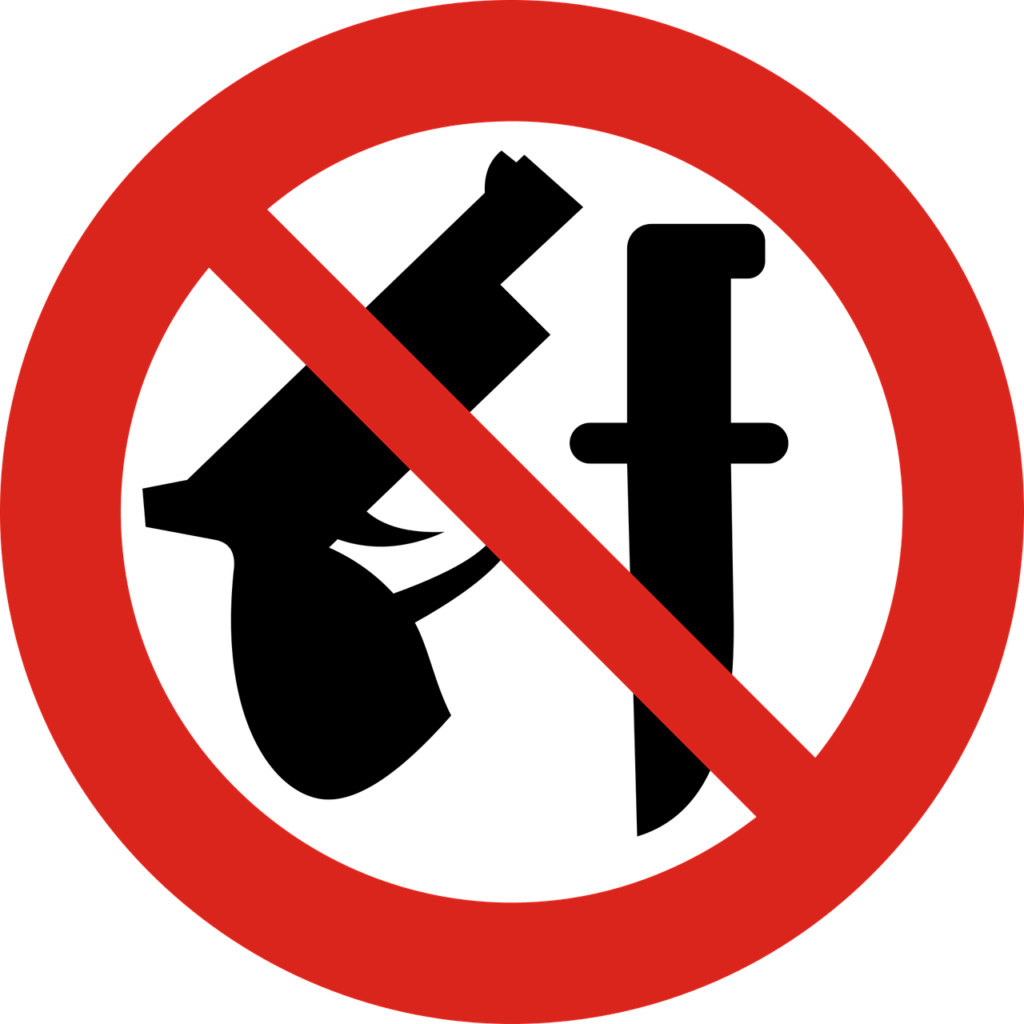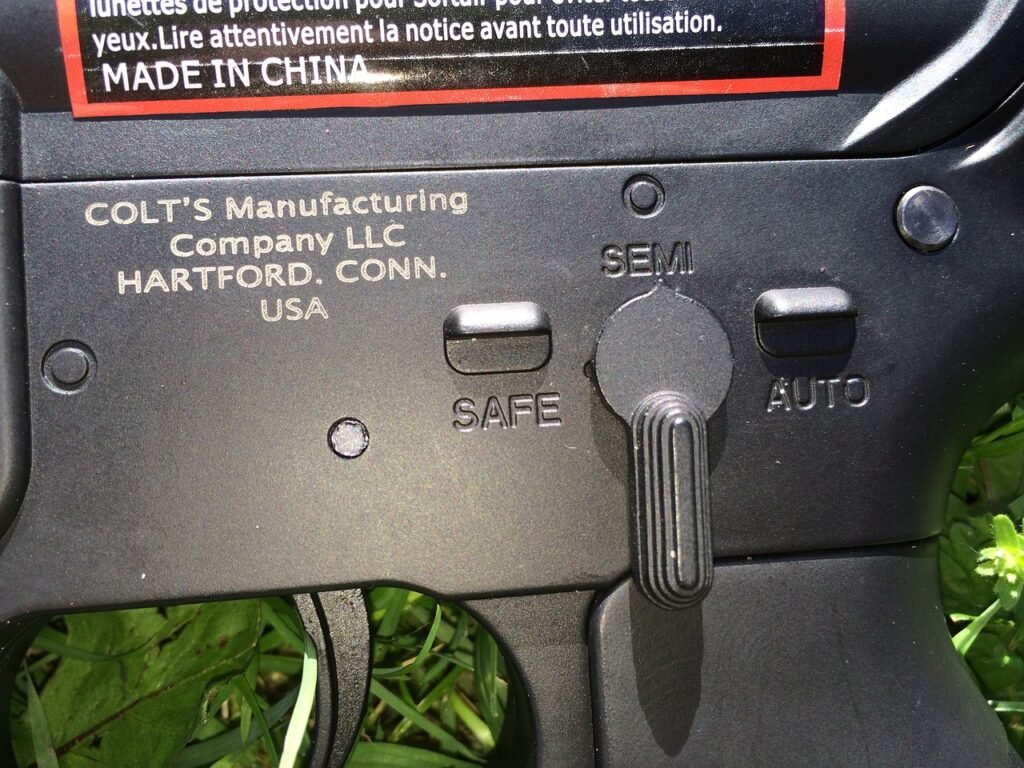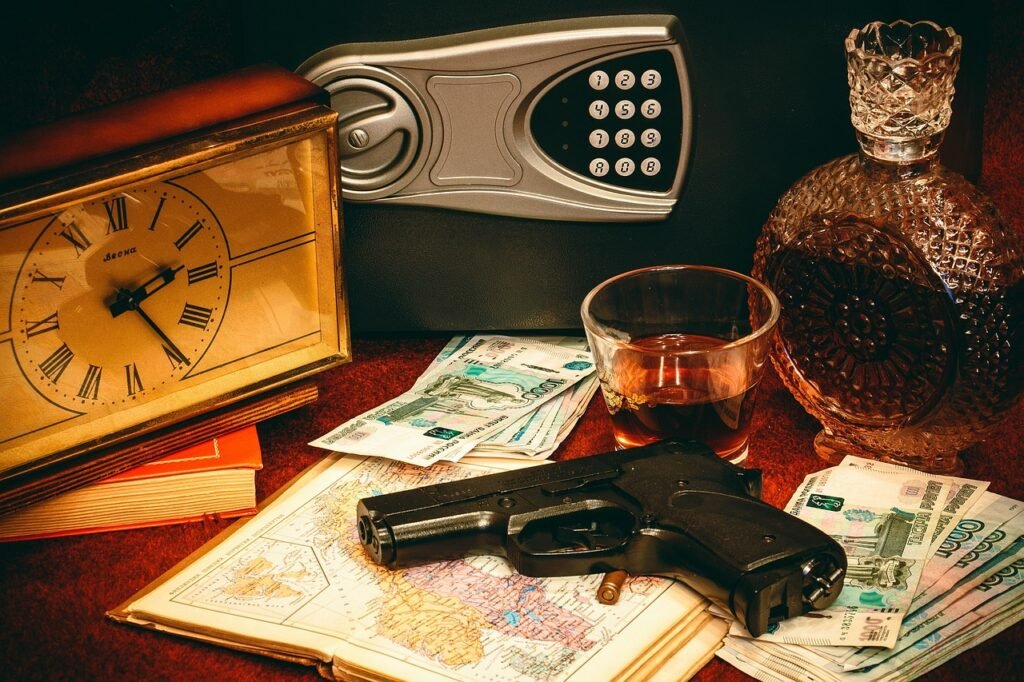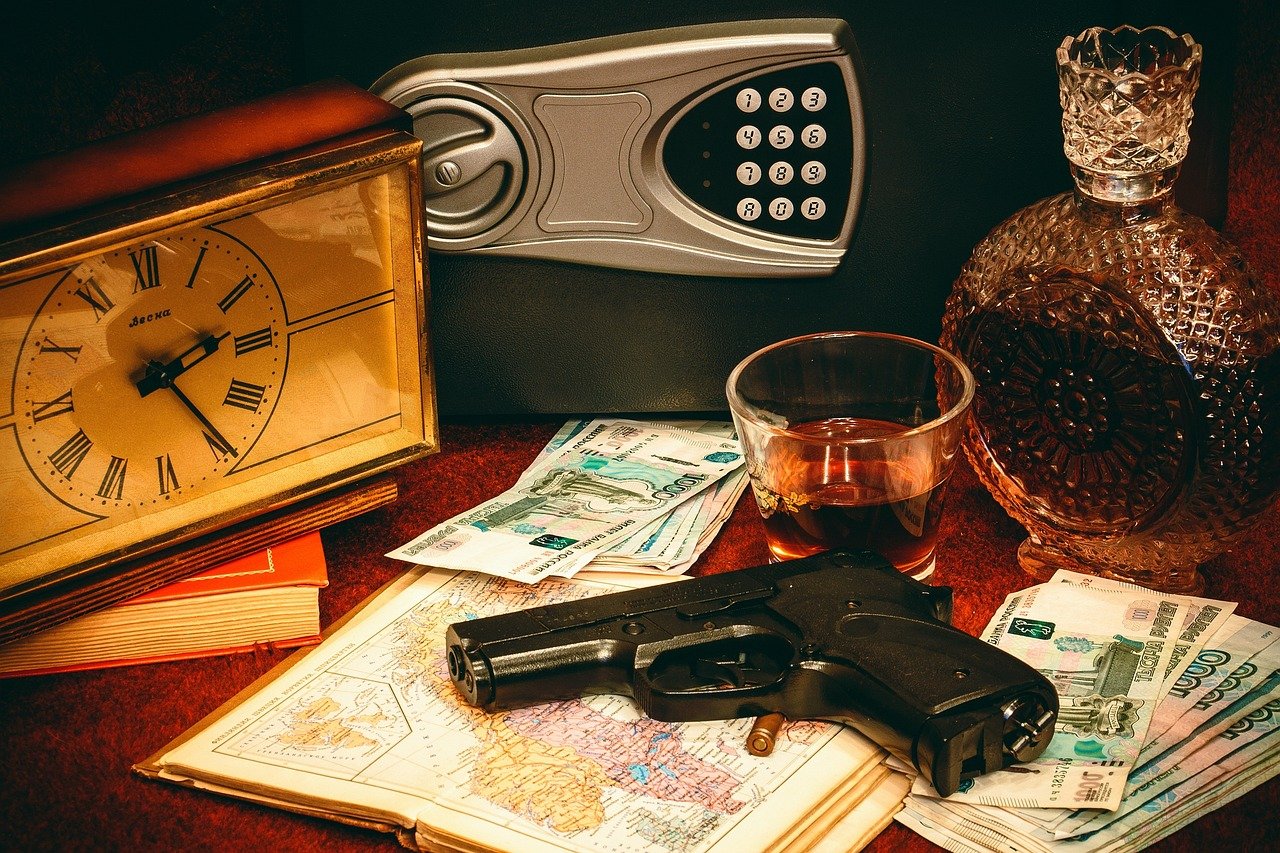Are you thinking about safely installing a wall gun safe but not sure where to start? Look no further! In this detailed step-by-step tutorial, you will find all the guidance you need to securely install your wall gun safe. From choosing the right location to ensuring proper anchoring, this guide has got you covered. So grab your tools and get ready to create a secure and discreet storage option for your firearms. Let’s dive in!

This image is property of pixabay.com.
Preparing for Installation
Selecting a Suitable Location
Before you begin the installation process of a wall gun safe, it is essential to choose a suitable location for it. Consider accessibility, concealment, and the size of the safe. Opt for a location that cannot be easily seen or accessed by unauthorized individuals, such as inside a closet or behind a piece of furniture. Additionally, ensure that the location is easily accessible for you, without any obstacles hindering your ability to reach the safe quickly in case of an emergency.
Gathering Necessary Tools
To ensure a smooth and efficient installation process, gather all the necessary tools beforehand. Some common tools you may need include a measuring tape, level, drill, pilot drill bit, screwdriver, wrench, and a stud finder. Having all the required tools readily available will save you time and frustration during the installation.
Checking Building Regulations
Before proceeding with the installation, it is crucial to check your local building regulations and codes. Different jurisdictions may have varied rules regarding the installation of gun safes. Familiarize yourself with these regulations to ensure that you comply with all necessary requirements. Adhering to building codes not only ensures your own safety but also prevents any potential legal issues down the line.
Pre-Installation Preparations
Clearing the Area
Ensure that the area where you plan to install the wall gun safe is clear of any obstructions or debris. Move any furniture, decorations, or other items that may hinder the installation process. This will provide you with adequate space to work comfortably and ensure that the safe is properly secured to the wall.
Inspecting the Wall
Before proceeding with the installation, inspect the wall where the gun safe will be mounted. Look for any signs of damage, such as cracks or weak spots, that may affect the integrity of the installation. If necessary, consult a professional to assess the wall’s stability and reinforce it if needed. It is crucial to mount the safe on a sturdy and structurally sound wall for maximum security.
Assembling the Included Accessories
Now is the time to assemble any accessories that may have come with your wall gun safe. Read the manufacturer’s instructions carefully and follow the step-by-step guide to ensure proper assembly. This may involve attaching mounting brackets, mounting plates, or other hardware necessary for the installation process. Taking the time to assemble the accessories correctly will contribute to a secure and hassle-free installation.

This image is property of pixabay.com.
Mounting the Wall Gun Safe
Marking the Mounting Holes
With the location selected and the area prepared, it’s time to mark the mounting holes on the wall. Use a pencil or marker to mark the positions where the safe will be anchored. The safe should be mounted to wall studs whenever possible to ensure maximum strength and security. Use a stud finder to locate the studs, mark their positions, and determine the best placement for the safe. Additionally, mark any pilot holes that may be required for anchors.
Drilling Pilot Holes
Once the mounting holes and pilot holes are marked, it’s time to drill them into the wall. Use a drill with an appropriate-sized pilot drill bit to create the necessary holes. Take care to drill straight and at the correct depth to ensure a secure installation. Pilot holes help guide the screws or anchors into place and prevent the wall from splitting or cracking. Accurate and properly drilled pilot holes are essential for a sturdy and reliable installation.
Securing the Mounting Plate
After the holes are drilled, secure the mounting plate to the wall. Align the plate with the drilled holes and use screws or anchors to attach it firmly to the wall. Make sure the mounting plate is level and securely fastened for optimal stability. Double-check the alignment and adjust if necessary. The mounting plate is the foundation for the safe, so it is crucial to ensure its solid attachment to the wall.
Installing the Wall Gun Safe
Attaching the Safe to the Mounting Plate
Once the mounting plate is secure, it’s time to attach the wall gun safe to it. Carefully lift the safe and align it with the mounting plate. Match the mounting holes on the safe with the corresponding holes on the plate. Insert the screws or bolts provided by the manufacturer and tighten them using a screwdriver or wrench. Ensure that the safe is securely fastened and does not wobble or move when touched. This step ensures that the safe is properly connected to the mounting plate and enhances its overall stability.
Adjusting for Level
To ensure proper functionality and ease of access, it is crucial to adjust the safe for level. Use a level to check that the safe is perfectly horizontal and adjust if necessary. This step guarantees that the door opens and closes smoothly and prevents any potential issues with the locking mechanism. A level installation not only provides convenience but also contributes to the long-term durability of the safe.
Securing the Safe in Place
Once the safe is adjusted for level, secure it in place using the provided screws or bolts. Tighten the fasteners securely, making sure the safe is firmly attached to the mounting plate. This step ensures that the safe remains in its desired position and prevents any accidental dislodging or movement. Take the time to double-check the security of the bolts or screws to ensure the safe is tightly secured.

This image is property of pixabay.com.
Securing the Anchors
Using Concrete Anchors
If you are installing the wall gun safe onto a concrete wall, you may need to use concrete anchors for added support. Concrete anchors provide a more secure attachment and prevent the safe from being easily removed. Follow the manufacturer’s instructions on how to properly use and install concrete anchors. Ensure that the anchors are securely fastened to both the wall and the safe, providing maximum stability and resistance.
Using Wall Anchors
For installations on drywall or other non-concrete surfaces, wall anchors may be necessary. Wall anchors distribute the weight of the safe and secure it firmly to the wall. Pay attention to the weight capacity of the wall anchors and select anchors that can adequately support the weight of the safe. Install the wall anchors according to the manufacturer’s instructions, ensuring they are securely seated in the wall. Properly installed wall anchors provide an additional layer of security for your wall gun safe.
Tightening and Testing the Anchors
After securing the anchors, tighten them using the appropriate tools. Take care not to overtighten and risk damaging the anchors or the wall. Ensure that the anchors are securely fastened and do not allow any movement or slack. Once tightened, test the anchors by gently pulling on the safe to verify their strength and reliability. If the safe remains firmly in place, the anchors are securely installed, and the safe is ready for use.
Checking Safe Alignment
Checking for Smooth Opening and Closing
After the installation is complete, it is crucial to check the safe for proper functionality. Open and close the safe multiple times, ensuring that the door moves smoothly and without any obstructions. The safe’s door should open and close easily, allowing for quick access to your firearms or valuables. If you experience any issues or resistance during the opening or closing process, revisit the installation to verify that the safe is properly aligned and adjusted.
Verifying Proper Lock Engagement
With the safe closed, verify that the locking mechanism engages correctly. Ensure that the bolts or bars securely lock into place and provide a strong barrier against unauthorized access. Check for any misalignment or gaps in the locking mechanism and make any necessary adjustments. It is crucial to ensure that the lock engages properly to guarantee the security and protection of your firearms.
Testing the Safe’s Stability
To ensure the safe is securely installed, give it a gentle shake or push to test its stability. A properly installed wall gun safe should not wobble or move when pressure is applied. If the safe shows any signs of instability, reinforce the installation by tightening the screws or bolts further. Ensuring that the safe is stable prevents any accidental dislodging and minimizes the risk of theft or damage.
Finalizing Installation
Concealing and Covering the Safe
Once the wall gun safe is securely installed, consider concealing it to enhance its security and camouflage its presence. You can use various methods to conceal the safe, such as hanging artwork, installing a decorative mirror, or placing furniture strategically to cover the safe. The goal is to make the safe blend seamlessly into the room, reducing its visibility to potential intruders.
Removing Installation Debris
After installation, clean up all debris and remnants from the installation process. Vacuum or sweep the area to remove any dust, wood shavings, or other debris that may have accumulated during the installation. A clean and tidy area not only improves the aesthetic appearance but also prevents any potential hazards or obstructions.
Completing Manufacturer’s Checklist
Refer to the manufacturer’s checklist that typically comes with the wall gun safe. Carefully review each item on the list and ensure that you have completed all required tasks during the installation process. Checking off each item on the manufacturer’s checklist confirms that the installation has been carried out correctly and that all necessary steps have been followed. Following the manufacturer’s instructions guarantees the safe’s optimal performance and longevity.
Testing and Calibration
Testing the Lock Mechanism
Once the wall gun safe is installed and finalized, it is crucial to test the lock mechanism. Make sure that the lock engages and disengages smoothly and without any resistance. Test the key or keypad inputs to verify that they function correctly. It is essential to ensure that the lock mechanism works flawlessly to guarantee both security and ease of use.
Performing Calibration Procedures
Some wall gun safes may require calibration after installation. Refer to the manufacturer’s instructions for the specific calibration procedures for your safe. Calibration ensures that the safe’s internal mechanisms, such as digital keypad or fingerprint scanners, function accurately and reliably. Follow the instructions carefully to calibrate the safe correctly and avoid any potential lockout situations or malfunctions.
Checking Alarm and Sensor Functionality
If your wall gun safe includes alarm systems or sensors, it is essential to test their functionality. Trigger the alarms or sensors and verify that they activate as intended. Check the volume and range of the alarm to ensure that it can be heard and detected from various locations in your home. Proper testing and verification of the alarm and sensor functionality provide an additional layer of security for your wall gun safe.
Additional Security Measures
Installing Security Cameras
To enhance the security of your wall gun safe, consider installing security cameras in the vicinity. Security cameras provide an extra layer of protection by recording any unauthorized attempts to access the safe. Ensure that the cameras cover the entire area surrounding the safe, providing clear visibility of any suspicious activity. The presence of security cameras can serve as a deterrent and provide valuable evidence if needed.
Adding Motion Sensor Lighting
Motion sensor lighting is another effective security measure to consider. Install motion sensor lights near the wall gun safe to illuminate the area instantly when motion is detected. This added visibility can deter potential intruders and alert you to any unusual activity near the safe. Motion sensor lighting increases the overall security of your gun safe installation by providing enhanced visibility at key moments.
Using Tamper-Proof Screws
For an extra level of protection, consider using tamper-proof screws when installing your wall gun safe. These screws have unique heads that require specialized tools for removal. Using tamper-proof screws makes it more difficult for unauthorized individuals to tamper with or remove the safe from the wall. This added security measure further safeguards your firearms and valuables from theft or unauthorized access.
Maintenance and Periodic Checks
Regular Cleaning and Inspection
To ensure the longevity and optimal performance of your wall gun safe, conduct regular cleaning and inspections. Remove dust and debris from the exterior and interior of the safe using a soft cloth or brush. Inspect the locking mechanism, hinges, and other moving parts for any signs of wear or damage. Regular cleaning and inspections prevent any potential issues from developing and ensure the safe’s continued reliability.
Verifying Battery Power
If your wall gun safe operates on battery power, it is crucial to regularly check and replace the batteries as needed. Dead or weak batteries can compromise the functionality of the safe, rendering it inaccessible when needed. Follow the manufacturer’s recommendations regarding battery replacement intervals and ensure that fresh batteries are always in place. Maintaining proper battery power ensures uninterrupted operation of your wall gun safe.
Updating Firmware and Software
If your wall gun safe incorporates digital or electronic features, it may be necessary to periodically update the firmware or software. Manufacturers often release updates to address security vulnerabilities or improve functionality. Regularly check for any available updates and follow the manufacturer’s instructions on how to install them correctly. Keeping the firmware and software up to date ensures that your wall gun safe benefits from the latest security enhancements and improvements.
In conclusion, installing a wall gun safe requires careful planning, attention to detail, and adherence to building regulations. By selecting a suitable location, gathering the necessary tools, and thoroughly following the provided step-by-step guide, you can ensure a secure and reliable installation. Remember to check the safe’s alignment, secure the anchors properly, and conduct thorough testing and calibration. Implementing additional security measures, conducting periodic maintenance, and staying up to date with firmware updates further enhance the security of your wall gun safe. Enjoy the peace of mind that comes with a properly installed and maintained wall gun safe, knowing that your firearms and valuables are protected.
